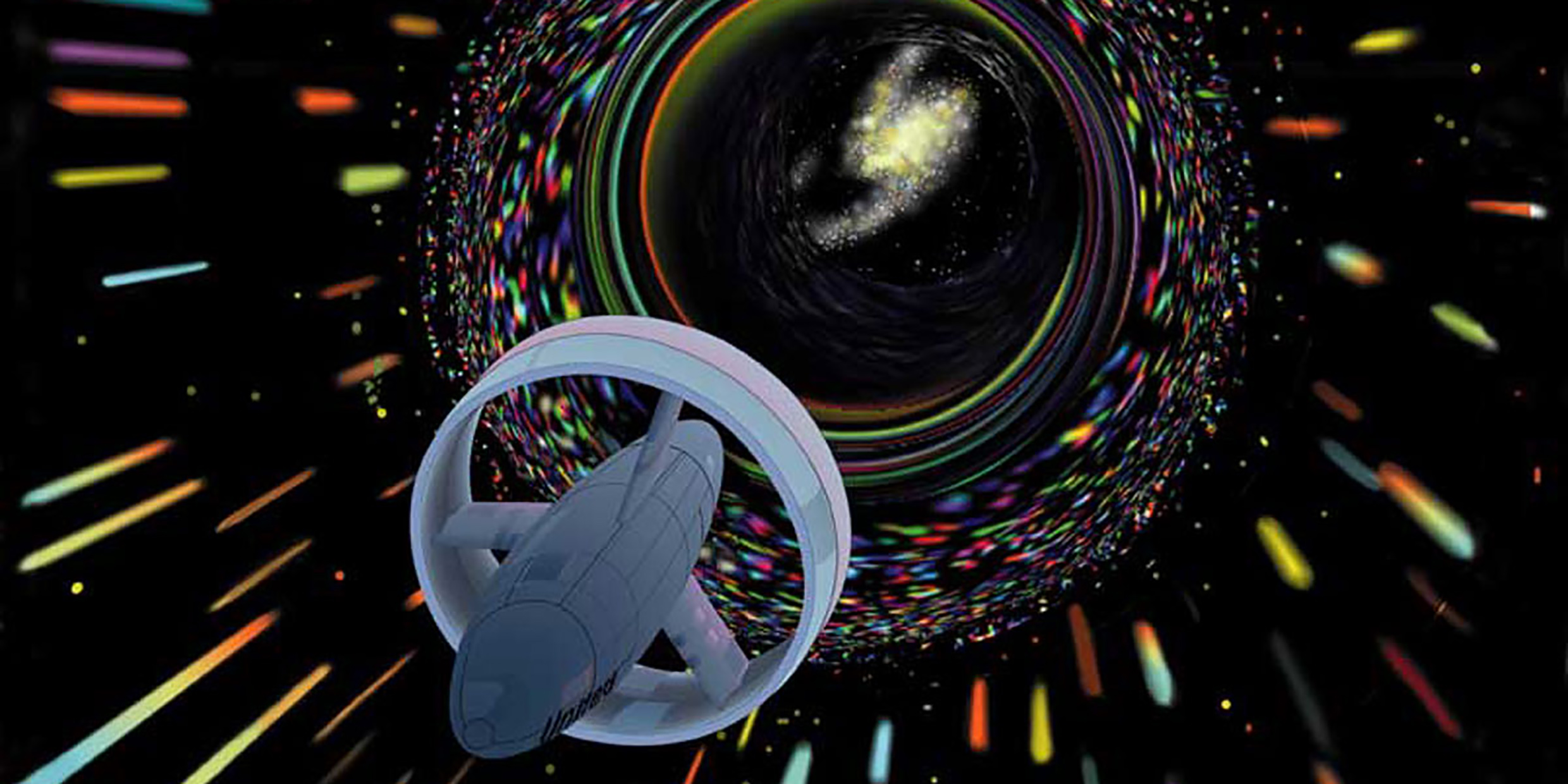Originally published 18 July 1988
The Space Captain looked around the control room. ‘Sit tight, everybody,’ he said. ‘We’re going into overdrive.’ His hand moved a small lever. There was a slight, almost imperceptible shudder, and a purple light glowed on the control panel as the ship streaked toward Antares.”*
Ah, yes. Galactic travel. A zip through hyperspace. The meat and potatoes of science fiction. We have traveled so often to Antares and beyond, in books, films, and television, that it seems only a matter of time before humans must actually embark upon such a voyage.
Impossible, says the physicist. No way, says the astronomer. Or as Sir Richard Woolley, once Britain’s Astronomer Royal, so tidily put it: “Space travel is bilge.”
But don’t tell that to the students in my astronomy class. They will listen politely to what I have to say about the unbridgable distances to the stars, about the energy requirements for travel at speeds close to the speed of light, and about nature’s absolute prohibition on travel at speeds greater than the speed of light — they will listen politely and then they will say “But how can you be sure? Maybe there’s lots of stuff we don’t know yet.”
And, of course, they are right. One would hate to be caught with one’s imaginative pants down, as was Dr. Lee De Forest, the man who invented the vacuum tube, who in 1957 was quoted as saying that man would never reach the moon “regardless of all future scientific advances.”
Who, a hundred years ago, would have imagined flying through the air to Europe at twice the speed of sound? Who would have guessed that we would get to the moon only 12 years after De Forest pronounced it impossible. Humans will be colonizing Mars before the middle of the next century, easy. Can Antares be far behind?
The ways to go
Listen to the science fiction writers: There are lots of ways to get to Antares fast.
There’s old reliable hyperspace. According to this view, our familiar three-dimensional universe is folded or crumpled in a higher dimension, as a flat piece of paper might be crumpled in three-dimensional space. The space traveler moves quickly from one place in the universe to another by taking a short cut through the higher dimension.
A variation on the hyperspace theme imagines a nifty short cut through a black hole, which in this souped-up version of the gospel of relativity is actually a wormhole through a higher dimension.
Or one might avoid nature’s prohibition on faster-than-light space travel by taking a quantum jump. In the standard interpretation of quantum physics, electrons in the atom jump from one energy level to another without traversing the space (or energies) in between. If electrons can do it, then why not the Antares-bound spaceship?
And if this stretched-out physics doesn’t do the trick, then one can always explore psychic dimensions. Dematerialization. Travel from one place to another as pure thought. Reconstitute the spaceship as bodiless information, instantly communicated within that great Mind which is the universe.
Why not? I’ll tell you why not. It’s all bilge.
These thoughts on the impossibility of space travel are inspired by a book called No Way, The Nature of the Impossible, edited by mathematician Philip Davis and physicist David Park. The book considers in delightful detail what it means to say “impossible” in all areas of science. It is from Park’s own contribution to the book, a chapter called “When Nature Says No,” that I borrowed the sci-fi episode that begins this column — and Sir Richard Woolley’s royally-stated opinion on the impossibility of space travel.
Possible and not so impossible
The essays in No Way consider the “impossibility” of everything from climbing Mt. Everest to parenting a perfect child. The editors contend that “because mankind is inspired by the challenge of the impossible…it behooves us to have some conceptions of what it is.” I agree. A healthy notion of what is possible and impossible is at the heart of all good science.
“To live at the boundary between the possible and the impossible, and to be aware of it, is to be truly alive,” say Davis and Park. And they wisely add: “What is really new in the world emerges at this boundary.”
Their words apply equally to mountaineers, parents, and prospective space travelers. To imagine that everything is possible — as do the people who read supermarket newspapers, politicians who believe in astrology, and growing numbers of New Agers — takes the edge off living at the boundary. To imagine that the impossible is carved in stone takes the edge off too.
Science is different from superstition and from science fiction because it cleaves to the boundary between the possible and impossible. It is a delicate balancing act — to be skeptical and open at the same time. I don’t believe in UFOs because I am firmly convinced that space travel is bilge. But I also know that our present knowledge of the world is partial and tentative. Someday, humans may travel to Antares. Someday Antarians may visit Earth. I’m prepared to be astonished.
* Excerpt from No Way: The Nature of the Impossible by Philip J. Davis and David Park. © 1987 W. H. Freeman and Co. Reprinted with permission.



